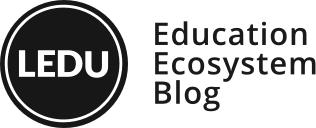
Technology is fast transforming our lives, with Virtual Reality (VR) and Augmented Reality (AR) experiences being highly sought after.
For a long time, VR was associated with gaming companies. Today, however, it cuts across various sectors. UX design for AR and VR is vital to give the best user experience.
This raises the question: how can you best design for AR and VR?
The principles governing user experience and interaction techniques for the 3D designs don’t change.
Their consistency is applauded given the different opportunities that keep presenting themselves to developers and designers, despite the dramatic changes in AR and VR hardware.
3D designers ought to sharpen their skills if they are to remain relevant in the context of constantly evolving technologies.
Barnabas, a UK-based senior UX/UI designer who currently teaches people his skills, says that “the concepts driving user experiences such as social design, emotional user experience, and gamification should be brought together when carrying out AR design and VR design.”
An easy-to-use interface offers experiences that wow users.
Here are 4 tips on how to design for AR and VR.
1. Gain Exposure on AR and VR
Since you cannot design for projects you don’t understand, the first step to designing for AR and VR is to personally experience 3D and immersive technologies.
Put yourself in the user’s shoes and use the available devices and technologies; thinking about how you could improve on project designs or make better design decisions.
By gaining real-time experience and interaction with AR and VR applications, you are better placed to understand the specific concerns associated with projects, as well as getting a feel for the platforms end users will interact with.
An open mind and attentiveness are essential when designing for AR and VR. It will help you to pay close attention to details when determining the usability of devices which will result in better design processes for the ultimate user experience.
Potential pitfalls that often interfere with how users interact with applications include confusing processes, difficulty in use, and stressful tasks.
When designing for experience, keep in mind both the good and bad, so that you know what to keep, discard, or improve on.
One of the most vital aspects for non-VR consumers is creating user onboarding sessions at the start.
The instructions will help them to get new experiences that may not have previously established norms.
The users are trained and given more information on how best to navigate and interact with the immersive content and gain more enjoyable and satisfying experiences.
2. Be All-Inclusive
Design and development do not work best in isolation. Designing for AR and VR requires a holistic approach which includes everything from the hardware currently available to the coding skills required by the immersive technology.
When designing for AR and VR experiences, experimenting with 3D modeling and downloading development tools such as Unity is a good place to start.
The next step entails gaining a thorough understanding of the platforms and the devices involved. The technologies will reshape both your development and design work for better results.
The type of project you are designing for will influence the requirements and the interactions that will happen in your system.
Being all-inclusive will help you familiarize yourself with the necessary hardware requirements and make the designing process easier.
Finally, when developers and designers have a solid understanding of how a project comes together, they will empathize and appreciate the available skills necessary for achieving the best when designing for AR and VR.
3. Consider the Environmental Factors
The environment in which AR and VR devices will be used also affects the design process. Immersive technologies require wearable devices which might not be conducive for use in certain circumstances.
For instance, when wearable devices are affected by sunlight or other climatic factors, the design of the devices is adjusted accordingly.
Other factors such as the bulkiness of the wearable devices also influence how you can design for AR and VR.
The location where the end users will use the applications also matters.
Will the users be seated or standing?
What is the expected use of the application and what are the anticipated benefits?
These are some of the questions that help designers to achieve great end design.
It is also important to ensure the project design fits the exact device interface for which it is intended.
For example, is the developed application a web app? Will the application be viewed on a desktop? How does it appear on the headset?
Answering such questions will help a designer offer the best design experience based on the user’s needs.
4. Engage Your Creative Juices
Designing for AR and VR requires creativity, thanks to the enormous potential that these technologies pose in various sectors globally.
These technologies offer users an incredible way of questioning and exploring the world around them.
Commercial and retail experiences are big beneficiaries of VR. For example, in the motor industry, clients can test and drive vehicles even before they decide to purchase.
Furthermore, people are exploring more opportunities in which this technology can transform the lives of people around the world.
The secret lies in coming up with the best gameplay for the AR and VR application devices. There are no limits to technology.
With no restrictions, why not get creative and see how far your design can go?
Wrapping Up
Pursuing top-notch industry-trusted training in User Experience can assist you to learn the best way to design for AR and VR.
To offer the best AR and VR experiences, aim to be a successful designer.
Do you know of other tips on how to design for AR and VR?
Please share your comments below.







